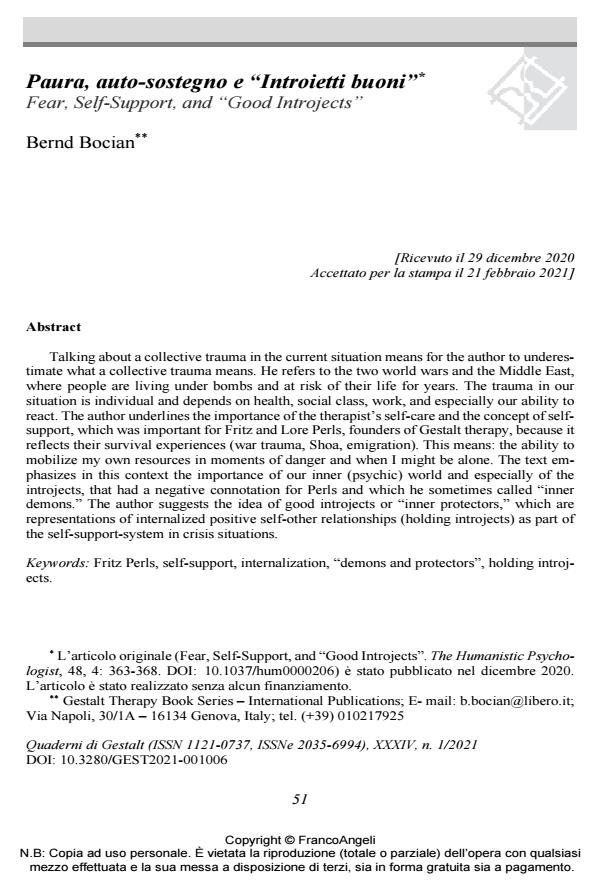Paura, auto-sostegno e "Introietti buoni" Fear, Self-Support, and "Good Introjects"
Journal title QUADERNI DI GESTALT
Author/s Bernd Bocian
Publishing Year 2021 Issue 2021/1
Language Italian Pages 9 P. 51-59 File size 156 KB
DOI 10.3280/GEST2021-001006
DOI is like a bar code for intellectual property: to have more infomation
click here
Below, you can see the article first page
If you want to buy this article in PDF format, you can do it, following the instructions to buy download credits

FrancoAngeli is member of Publishers International Linking Association, Inc (PILA), a not-for-profit association which run the CrossRef service enabling links to and from online scholarly content.
Talking about a collective trauma in the current situation means for the author to underes- timate what a collective trauma means. He refers to the two world wars and the Middle East, where people are living under bombs and at risk of their life for years. The trauma in our situation is individual and depends on health, social class, work, and especially our ability to react. The author underlines the importance of the therapist’s self-care and the concept of self-support, which was important for Fritz and Lore Perls, founders of Gestalt therapy, because it reflects their survival experiences (war trauma, Shoa, emigration). This means: the ability to mobilize my own resources in moments of danger and when I might be alone. The text em-phasizes in this context the importance of our inner (psychic) world and especially of the intro-jects, that had a negative connotation for Perls and which he sometimes called "inner demons." The author suggests the idea of good introjects or "inner protectors," which are representations of internalized positive self-other relationships (holding introjects) as part of the self-support-system in crisis situations.
Keywords: Fritz Perls, self-support, internalization, "demons and protectors", holding introj- ects
Bernd Bocian, Paura, auto-sostegno e "Introietti buoni" Fear, Self-Support, and "Good Introjects" in "QUADERNI DI GESTALT" 1/2021, pp 51-59, DOI: 10.3280/GEST2021-001006